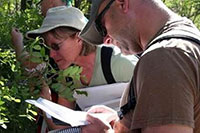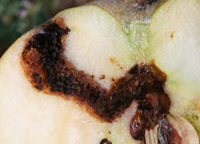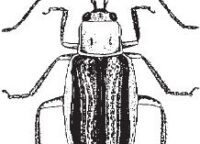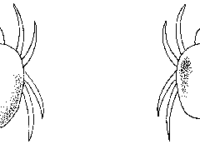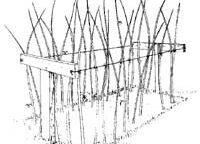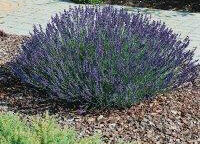- 07, 27, 2015
- No Comments.
- By
Buffalograss Lawns – 7.224
Print this fact sheet by T. Koski and R. Cox* (10/14) Quick Facts… Buffalograss is a perennial, warm season grass species. It is sod-forming, spreading by stolons (aboveground stems) which root where they touch the ground, forming new plants. Success and satisfaction with buffalograss is dependent on the use of proper establishment and management practices. […]
Take a Tour- 07, 23, 2015
- No Comments.
- By admin
Extension Update – July 22, 2015
To assure that all of you are kept up to date on a regular basis, the three regional directors and the state Extension Administration Office provides bi-weekly Extension Updates. This forum is for all Extension announcements, so if you have something to distribute, please forward it to Lori Bates with FOR EXTENSION UPDATE noted. July […]
Take a Tour- 07, 22, 2015
- No Comments.
- By
Codling Moth: Control in Home Plantings – 5.613
Print this fact sheet by W. Cranshaw and R. Hammon* (6/13) Quick Facts… The caterpillar of the codling moth is the common ‘worm’ in a wormy apple or pear. Most injury is usually produced by the second generation, which begins in early summer. Non-chemical controls that can reduce fruit damage include fruit thinning, prompt removal […]
Take a Tour- 07, 22, 2015
- No Comments.
- By
Western Corn Rootworm – 5.570
Print this fact sheet by F.B. Peairs and S.D. Pilcher* (9/13) Quick Facts… Western corn rootworm larvae feed on root hairs and small roots; larger rootworms feed on primary roots. Crop rotation is the most consistent and economical means of controlling western corn rootworm populations. Cultural practices that promote strong root systems and a vigorous […]
Take a Tour- 07, 22, 2015
- No Comments.
- By
Spider Mites in Corn – 5.555
Print this fact sheet by F.B. Peairs * (12/14) Quick Facts… Spider mite outbreaks are commonly due to hot, dry conditions, particularly in drought-stressed corn. Two common species of spider mites in Colorado are Banks grass mite (BGM) and two-spotted spider mite (TSM). Manage spider mite problems by preserving beneficial Insects and mites. Base treatment […]
Take a Tour- 07, 22, 2015
- No Comments.
- By admin
Grasshoppers in Field Crops – 5.535
Print this fact sheet by F.B. Peairs * (10/14) Quick Facts… Grasshoppers often appear first in weedy areas of roadsides, fence rows, irrigation ditches and other noncrop areas. After these food plants are gone, the insects leave in search of other food, often an irrigated crop or newly emerged winter wheat. Control grasshoppers in the […]
Take a Tour- 07, 14, 2015
- No Comments.
- By
Raspberries for the Home Garden – 7.001
Print this fact sheet by J. Reich, H. Hughes and J.E. Ells * (4/20) Quick Facts… Of all bramble fruits, only red and yellow raspberries are recommended for general cultivation in Colorado. There are now a few hardy varieties of black raspberries. Blackberries are considered marginal, due to inadequate hardiness, but some varieties can be […]
Take a Tour- 07, 14, 2015
- No Comments.
- By
The Preparation of Small Spray Quantities of Pesticides – 7.615
Print this fact sheet by H. Larsen, R. Hammon and C.E. Swift* (10/20) Reviewed by I. Shonle** Quick Facts… Pesticide labels often do not contain directions for mixing small quantities of spray. Accurate measurements of ingredients are important when mixing pesticides. The concentration of the active ingredient in the spray is critical to its effectiveness. […]
Take a Tour- 07, 13, 2015
- No Comments.
- By
Growing Lavender in Colorado – 7.245
Print this fact sheet by K. A. Kimbrough and C.E. Swift1 (10/09) Quick Facts… Hardy lavender varieties thrive in Colorado’s USDA Hardiness Zones 5 through 7. Lavender grows best in full sun and slightly alkaline soils, which makes it a perfect plant for Colorado. Lavender comes in a variety of colors including white, pink, blue, […]
Take a Tour- 07, 10, 2015
- No Comments.
- By
Strawberry Diseases – 2.931
Print this fact sheet by C.E. Swift *(2/21) Revised by S. Carter and Y. Henson Quick Facts… Winter damage and poor cultural management predispose strawberry plants to diseases. Red stele, black root rot, powdery mildew, botrytis fruit rot, leaf spot, and leaf scorch are the most important strawberry diseases in Colorado. Strawberry plants are most […]
Take a Tour

